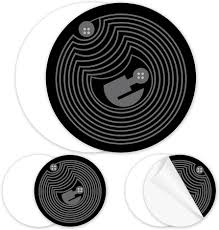Table of Contents
ToggleIntroduction
NFC (Near Field Communication) stickers have gained popularity due to their versatility and ease of use. They enable quick access to information and effortless data sharing with a simple tap of an NFC-enabled device. However, as with any technology that deals with data transmission, concerns about security are natural. Let’s explore the safety aspects of NFC stickers to understand their reliability and potential vulnerabilities.

Encryption and Data Protection
One of the primary security features of NFC technology, including NFC stickers, is the use of encryption. Data transmitted between the NFC sticker and the receiving device is typically encrypted, which helps prevent unauthorized access and eavesdropping. This means that any sensitive information, such as payment details or personal data, is protected during transmission, making it significantly harder for malicious actors to intercept and decipher the information.
Limited Range of Operation
NFC technology operates at a very short range, typically within a few centimeters. This limited range acts as a natural barrier against remote attacks. For an unauthorized party to intercept or tamper with the communication, they would need to be extremely close to the NFC sticker, which is both impractical and easily noticeable. This proximity requirement adds an extra layer of security and makes NFC stickers less susceptible to certain types of cyber threats.
Authentication Measures
Many NFC stickers and the systems they interact with come equipped with authentication mechanisms. These mechanisms ensure that only authorized devices can interact with the NFC sticker. For instance, certain NFC systems may require a secure password or token before access is granted. This authentication step significantly enhances the overall security by ensuring that only intended interactions are allowed.
Potential Vulnerabilities
While NFC stickers are generally safe, they are not entirely immune to risks. One potential vulnerability is the risk of “relay attacks,” where a malicious actor intercepts and relays communication between the NFC sticker and a legitimate device without the user’s knowledge. However, such attacks require sophisticated equipment and proximity, making them relatively rare.
Additionally, the content stored on NFC stickers can be modified if the sticker is not write-protected. This could lead to scenarios where an NFC sticker programmed to provide useful information is tampered with to direct users to malicious websites or applications. Ensuring that NFC stickers are write-protected and regularly checked for integrity can mitigate such risks.
Mitigating Risks
To enhance the safety of NFC stickers, follow these best practices:
- Use Encryption: Ensure that any data transmitted via NFC is encrypted to protect against unauthorized access.
- Enable Authentication: Use NFC stickers and systems that support authentication to ensure only authorized devices can access the information.
- Implement Write Protection: Write-protect NFC stickers to prevent unauthorized reprogramming.
- Regular Checks: Periodically check the NFC stickers for tampering to ensure their integrity.
- Educate Users: Inform users about the safe use of NFC technology and encourage them to only interact with recognized and trusted NFC stickers.
Conclusion
NFC stickers are designed with security in mind and offer several features that help protect data during transmission. While no technology is completely free from risks, the short-range operation, encryption, and authentication mechanisms of NFC technology significantly enhance its safety. By adhering to best practices and remaining vigilant, users can enjoy the convenience of NFC stickers with confidence in their security.
